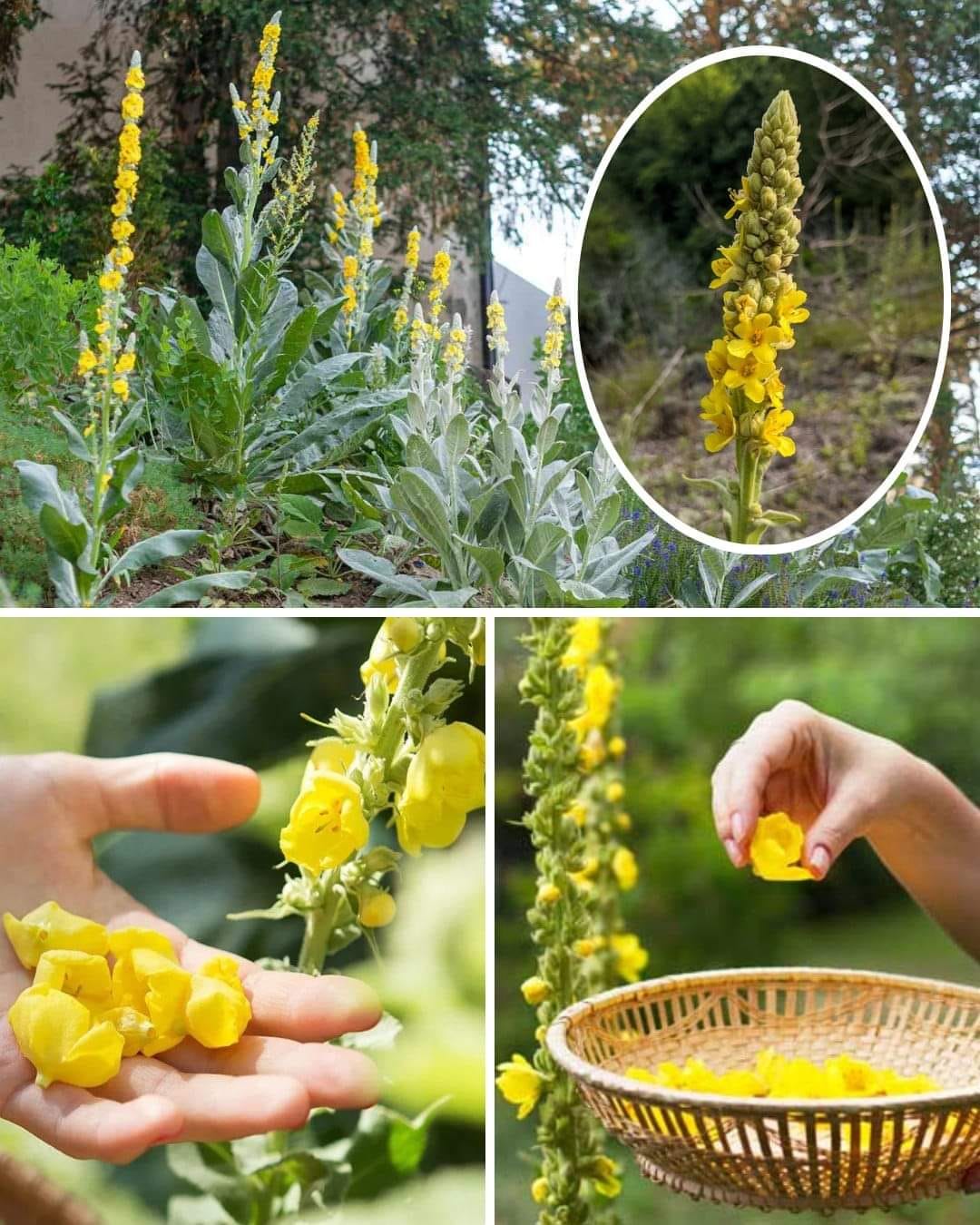Mullein (Verbascum thapsus), a tall, stately plant with velvety leaves and bright yellow
flowers, has been revered for its medicinal properties for centuries. This unassuming herb, often found growing wild in fields and roadsides, holds a treasure trove of benefits that can address a wide range of ailments. This guide delves into the diverse uses and benefits of mullein, providing valuable information for those seeking natural remedies.

Botanical Background:
Mullein, a member of the figwort family, is a biennial plant. It sprouts in its first year, developing a rosette of large, velvety leaves. The second year, a tall flowering stalk emerges, bearing clusters of bright yellow blossoms. Mullein is native to Europe and Asia but has naturalized in many parts of the world, including North America.
Traditional Uses:
Mullein has a rich history of traditional uses. Its leaves, flowers, and roots have been employed in various medicinal practices across cultures. Some of the most common traditional applications include:
- Respiratory Support: Mullein is widely known for its soothing effect on the respiratory system. It has been used to alleviate symptoms of cough, bronchitis, asthma, and other respiratory conditions. The leaves and flowers are often prepared as teas or tinctures.
- Ear Infections: Mullein oil, extracted from the flowers, has long been employed as a traditional remedy for earaches and ear infections. Its anti-inflammatory and antibacterial properties make it a popular choice.
- Skin Conditions: Mullein’s soothing properties can also be applied topically to treat skin conditions like eczema, psoriasis, and minor burns. The leaves can be crushed and applied as a poultice or incorporated into salves and ointments.
- Antioxidant and Anti-Inflammatory Properties: Mullein possesses antioxidant and anti-inflammatory properties, which contribute to its overall health benefits.
Modern Research and Scientific Evidence:
TO CONTINUE READING SEE NEXTPAGE
